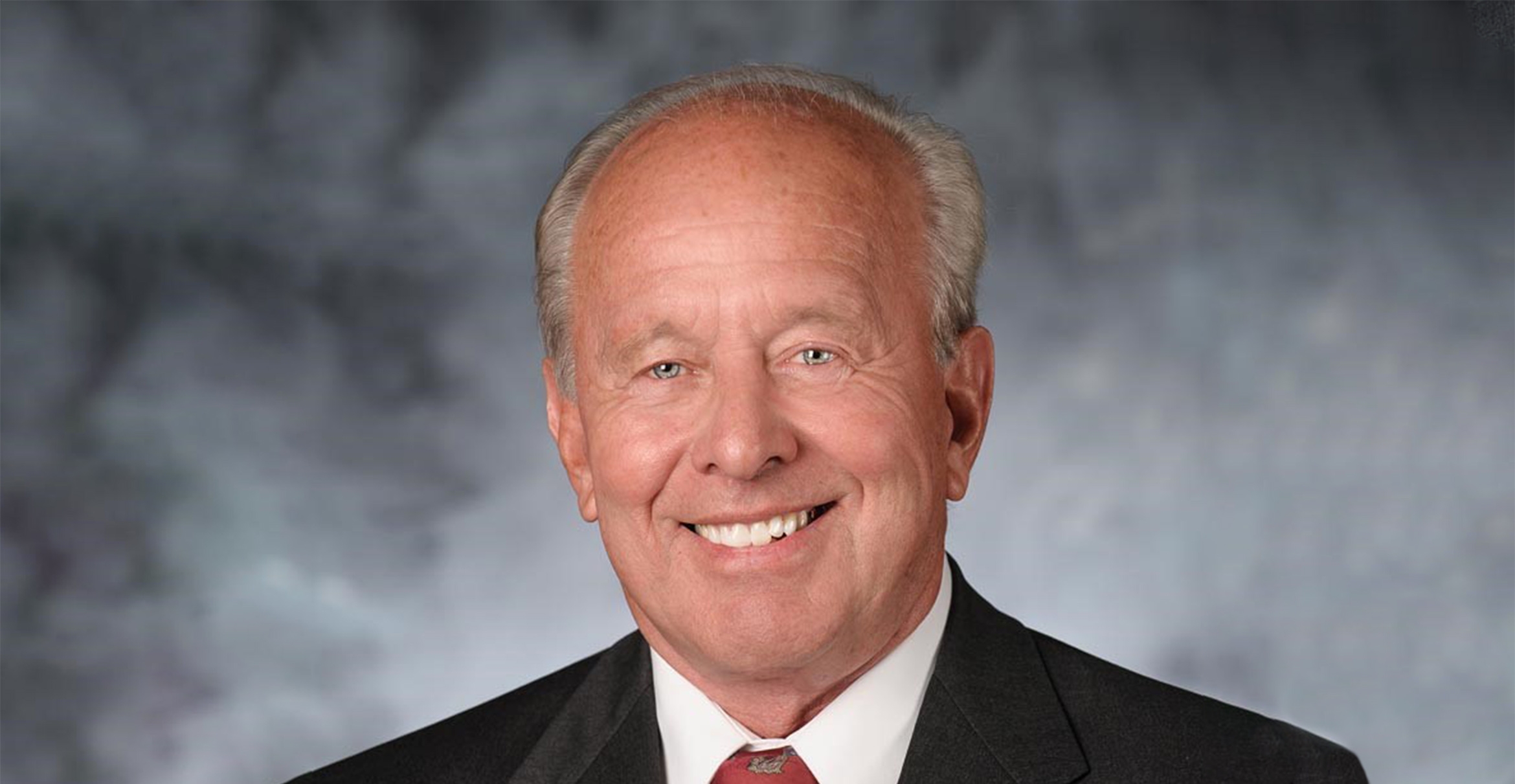Laser tech expert wins major materials award

Larry Coldren, who became a giant in laser technology during 37 years as a professor in the departments of materials, and electrical and computer engineering, won the prestigious ISCS Heinrich Welker Award. He joins emeritus professor and Nobel Laureate Herbert Kroemer and current College of Engineering dean, Umesh Mishra, among previous Welker Award recipients.
Over his career Coldren has received many of engineering’s top awards and honors, primarily in recognition of his contributions to semiconductor lasers and photonic integrated circuits (PICs) and their role in the opto-electronics revolution. The Welker Award is different; it recognizes high achievement in materials technology, resulting in seminal contributions to tunable lasers, vertical cavity lasers and photonic integrated circuits.
“It's always a very nice honor to receive an award,” Coldren said. “Nearly all of my other awards have been for devices, but the organization that gives this one is interested more in the materials aspects. They're looking at the expertise required to create the materials and make the devices, more than the use of the devices. It’s from the standpoint of growing the materials and getting them into the right shape.”
“I am delighted that the award committee bestowed the Welker Award to Larry Coldren, who is universally recognized as a leader in the field of photonics,” said Dean Mishra. “In his long career at UCSB, Larry has made enormous strides both in the realm of laser photonics and in developing the materials that have enabled those devices and made possible their manufacture and distribution on a scale reflected in their worldwide use in electrical devices and equipment. He has also written the definitive book on the subject, titled ‘Diode Lasers and Photonic Integrated Circuits.’”
“Much of my focus has been on things associated with ECE, but I'm [also] in the Materials Department for a reason,” Cauldron noted. “Materials students, some with backgrounds in chemistry or materials, have added a lot to my group. Of the twenty-five or so students I have had in my lab at any time for many years, typically four would be in the MBE [molecular beam epitaxy] lab and one or two would be doing MOCVD [metal organic chemical vapor deposition] growth. That's how we were able to make all these devices, and this award emphasizes that part of my history and the contributions of those students.”
Coldren first came to UCSB in 1984, after 13 years working on optical communications at Bell Labs. Two of his novel concepts for devices stand out for their major and lasting impact. One was a new design for a vertical-cavity surface-emitting laser (VCSEL), which nearly doubled the modal gain for a given amount of gain material. VCSELs were invented in Japan in the late 1970s, but prior to Coldren’s work, they had suffered from designs that followed edge-emitting laser approaches and gave very marginal performance.
“In 1987, I came to the realization that you had to put the gain only at the peaks of the standing wave rather than spreading it out evenly,” Coldren recalled. “Once we demonstrated that, VCSELs suddenly worked very well, and everyone followed this approach.”
Today, VCSELs are used throughout the world in optical fiber data communications, computer mice, barcode readers, laser pointers, and for facial recognition in iPhones and computers.
Coldren’s other groundbreaking invention was a sampled-grating distributed-Bragg-reflector (SG-DBR) laser, a new kind of widely tunable single-frequency laser diode that incorporated multi-element mirrors to enable very wide tunability and provided the technology for photonic integrated circuits in indium phosphide (InP). Over the past two decades, the SG-DBR has become a major laser-light source for a number of wavelength-division-multiplexed (WDM) fiber communication systems.
Coldren has also pursued a successful entrepreneurial arc. In 1990, he co-founded Optical Concepts, later acquired as Gore Photonics, to develop novel VCSEL technology, and in 1998, he co-founded Agility Communications, later acquired by JDSU (now Lumentum), to develop widely tunable integrated transmitters and transponders. At UCSB, he has led work on multiple-section widely tunable lasers, efficient VCSELs, and InP-based photonic integrated circuits having a variety of capabilities.
From 1991 into the 2000s, Coldren served as director of the DARPA/industry funded multi-campus Optoelectronics Technology Center. He became the Fred Kavli Chair Professor in 1999, served as interim dean of the College of Engineering from 2009 to 2011, and in 2017 became the Kavli Professor Emeritus and a Distinguished Research Professor. He has authored or co-authored more than 1,000 journal and conference papers, as well as eight book chapters and his previously mentioned textbook. He has filed 63 issued patents, which, together with his publications, have received more than 40,000 citations.
A fellow of IEEE, OSA (Optica), IEE, and the National Academy of Inventors, he is also a member of the National Academy of Engineering and a recipient of the John Tyndall, Aaron Kressel, David Sarnoff, IPRM, and Nick Holonyak, Jr. awards.
Shelly Leachman
Editorial Director
(805) 893-2191
sleachman@ucsb.edu

